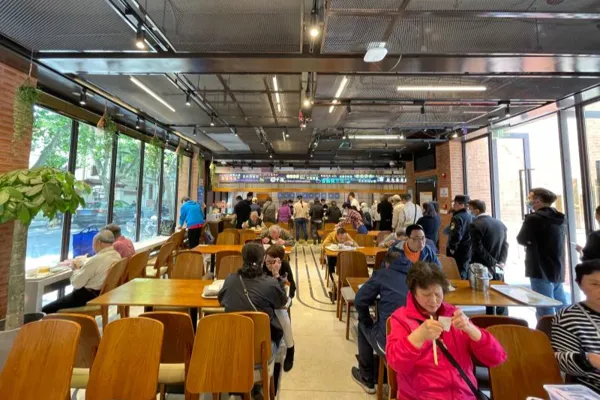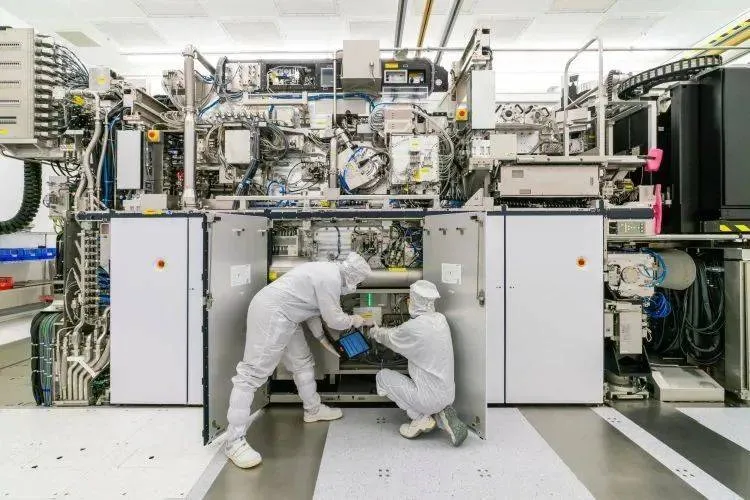Is the ideal state of Shanghai’s “community canteens” to be high-quality? Canteen|Community|Ideal
For "community canteen" operators, stable revenue is always an unavoidable foundation.
For streets and communities, the core concern is how to use a more sustainable way to alleviate the difficulty of eating for the elderly in the area, and to support residents to eat in community canteens or cooperative units in a reasonable way and with subsidies within their capabilities.
For elderly residents, their expectations for "community canteens" include: clean and tidy, safe and reliable, rich dishes, and convenient access.
Is it possible for such a "hybrid" with many goals to achieve?
How should the ideal status and service boundaries of a community canteen be positioned in line with the actual development of Shanghai?
"Shangguan News" reporters visited several experts and scholars to find solutions to the above problems.
It is a public service carrier Shangguan News: Have you ever been to a "community canteen" in a broad sense in your life? Are you satisfied with the few "community canteens" you have visited?
Wang Lingyi: Community restaurants that are located near residential areas and are completely responsible for their own profits and losses can be called "community canteens" in my broad sense.
The operators of these community restaurants are often friendly and good at doing business. They not only conduct price research and cost control measures, but also closely follow customer needs and introduce new ones from time to time. There are many signature dishes that have a stable number of repeat customers.
Citizens' feelings about this type of community restaurants are that they are casual and can be eaten at any time. Not only can they save a lot of time for "buying food", but they can also take advantage of the dining opportunity to get a little "firework" and get in touch with people from society. All kinds of people.
In recent years, some streets have set up "community canteens" and "elderly canteens", and I have visited them many times to listen to residents' opinions. What impressed me deeply is that people have high expectations for these "community canteens", which are similar to the expectations for restaurants in the market. This is probably also an important reason why some "community canteens" cannot satisfy citizens for a while.
Despite all the satisfaction issues, opening an elderly-help restaurant within the community’s “15-minute living circle” can bring real convenience and well-being to community residents, especially the elderly, and should be praised by governments at all levels. The main challenge in the future is how to carry out this project of helping the elderly more appropriately.
Yan Jiawei: I have been to many community canteens in the broad sense. After observing along the way, there are still many people who like community canteens at their doorsteps because of their convenience. Once, my unit encountered a situation where the canteen was temporarily renovated and services were interrupted. As a result, everyone went to the nearby community canteen to order meals.
The basic attribute of the community canteen set up by the street is a public service entity. After it needs to carry more public service functions, it cannot be completely driven by commercial profit goals. It needs to consider the opinions and needs of higher-level units that purchase its services, support its rents, and provide subsidies.
If it is positioned to mainly serve a specific group, such as the elderly, then it will tend to cook dishes according to the tastes of the elderly, which will be lighter. If this is the case, white-collar workers and young people may not like it.
Information pictures of community canteens in Wuning District, Caoyang Xincun Street, Putuo District
Shangguan News: Today, the positioning and specific service targets of different community canteens are different. What is the core problem it should solve?
Yu Hai: Nowadays, with abundant materials and convenient logistics, in most areas of Shanghai, community catering enterprises operating based on market-oriented mechanisms can solve residents' feeding problems more efficiently than community canteens, at least achieving financial balance and making certain profits. Therefore, I think that when building a community canteen, the first thing to answer is its necessity and survival issues, and then the satisfaction issues, such as meeting diversified needs, achieving higher convenience and price advantages, etc.
If it is a community canteen specially opened for the elderly, its public welfare must be placed first. How to implement price subsidies, who can enjoy the subsidies, and how to subsidize them must be carefully studied and considered.
Shangguan News: What do you think is the ideal state of a community canteen that is more in line with the actual situation in Shanghai? What issues do relevant managers and operators need to pay attention to?
Yan Jiawei: I personally feel that the ideal community canteen, which is more in line with the actual development of Shanghai, is not just a place to eat, but also a mechanism for consumer cooperatives and a node of community governance.
Residents who come here to eat not only have the willingness to eat and receive services, but also have a certain say in the restaurant's menu, taste, layout, and ingredient supply. In this way, after this space solves the problem of "food is the first priority for the people", it can also play a role and potential in community participation and community co-governance.
If the management team of the community canteen and the street staff responsible for connecting with it maintain a welcoming attitude towards the citizens and are willing to spend more time and maintain close communication with the citizens who come here to dine, and can make it a mechanism, I believe it will be able to Improve every day and find good ways to achieve our shared vision.
Yu Hai: The ideal state of a community canteen is to allow public welfare to benefit people who really need it, and at the same time have a certain degree of competitiveness in operation. This determines that community canteens have a directional nature, such as public welfare oriented, elderly oriented, etc.
If it is charity-oriented, special attention needs to be paid to where the support funds come from, how to sustain the operation, and how to select the beneficiaries.
If it is targeting the elderly, we must first understand the specific problems behind the "difficulty in dining for the elderly". Is it because the old man can’t do it or is it inconvenient for him to do it? Or do the elderly have financial difficulties and prices in nearby restaurants are generally high? For different problems, the solutions are different or focused.
Wang Lingyi: I always believe that community canteens are a reflection of the superiority of socialism. However, in the process of achieving superiority, we must pay attention to rich dishes, clear audiences, and clear rules. In one of the streets I surveyed, there was a situation where an elderly restaurant was unable to make a reasonable profit and had to suspend operations. It was later restored through diligent negotiation.
The "rules" mentioned here can include "which group of people will have priority for dining during a specific period of time" and "a blueprint that will be followed to the end, and canteen operators, contractors, etc. will not be changed at will because of changes in the main leaders of the street. Partners", etc., and avoid unnecessary conflicts as much as possible.
At the same time, it is recommended that community canteen operators use the Internet to promptly release information related to the construction, operation, and service content of community canteens and solicit opinions, and collect opinions from diners, residents, and other parties on a quarterly basis and give feedback.
Community Canteen in Wuning District, Caoyang Xincun Street, Putuo District
Watching the news with these "precautions": It seems that the ideal operator of a "community canteen" must not only have a sense of public welfare, responsibility and service awareness, but also be able to strike a balance between customer acquisition and word-of-mouth. How to provide reasonable government subsidies and support policies and use them appropriately is also a matter of concern to many citizens. What do you think about the service boundaries and service scope of "community canteens"?
Yan Jiawei: The construction of community canteens can have a particularly wide range of participation, which is similar to public parking lots.
All participants and stakeholders involved in community canteens need to coordinate, and ultimately participate in the operation and improvement of community canteens as participants. It is an active discussion process when everyone discusses the positioning, functions, and ideal status of the community canteen.
If "discussing and discussing together" can become the norm in community canteens, and everyone discusses pricing, service content, opening hours, time-sharing usage plans, etc., the service boundaries and service scope of community canteens will become increasingly clear.
Briefly speaking, the service content of community canteens can be divided into the following parts: the first part is basic public services, such as door-to-door meal delivery services specifically for the elderly and elderly people living alone in the community; the second part is inclusive public services, such as Discounted meal prices for seniors over 60 years old; the third area is commercial services, such as providing meals for surrounding white-collar workers. The third piece can apply market-oriented pricing, charging, and operating methods.
The customer base of community canteens should be encouraged to be as diverse as possible. A diverse customer base will increase the complexity of space management and operation, but if it can be managed and operated well, the vitality and sustainability of the space will be more guaranteed.
Wang Lingyi: The boundary of a community canteen is its public nature. It does not aim at profit maximization, but it must be able to achieve small profits or profits, otherwise it will not be sustainable. Its service scope is of course mainly focused on residents and employees within the jurisdiction of the street or town. There may also be special cases, such as serving children during holidays. Therefore, there is no standard answer to this question and it can vary according to local conditions and communities.
Of course, the “degree” of public financial investment lies in focus. For community canteens, their core goals must be daily food supply and sustainable operations. The focus of financial investment is to ensure this central goal.
Shangguan News: If you want to achieve "80 points" or even higher in community canteen management and operation, what is the key?
Wang Lingyi: Not long ago, the "Tianlong Life Box" located at No. 930, Zhongshan South 2nd Road, within the jurisdiction of Fenglin Street, Xuhui District, was unveiled. It has a construction area of nearly 1,400 square meters, a total of five floors, and its service scope radiates to the entire Tianlong area. This project was polished for eight months, and the opinions of many residents' representatives and representatives of community enterprises and institutions were solicited before the final plan was formed.
According to the concept of the Fenglin Street Party Working Committee and Office, the "Tianlong Life Box" is not only a "life box" that allows community residents to meet their daily needs without leaving the area, but also a "neighborhood gathering at the doorstep." Here, residents can fully enjoy efficient and convenient livable services, industry-friendly guidance for innovative development, green and open travel experience, a cultural-rich learning atmosphere, and care for the elderly. In this case, the operation of the community canteen is only one aspect, and the planning and functions of the entire space tend to be diversified.
Therefore, in my opinion, if you want to build a good community canteen, first, top-level design is very important. Including the intensity and proportion of city, district and sub-district investment, necessary explanations must be made at the People's Congresses at all levels.
Second, each street and town must conduct local research on public resources, including finance, space, operations, services, traffic, etc. Advanced technical tools such as big data can be introduced in this area of research.
Third, necessary public opinion guidance. For example, the meals provided to the elderly cannot simply satisfy their taste, but must be combined with healthy nutrition and reasonable social interaction. At the same time, as much as possible, some micro-lectures on popular science knowledge about dietary nutrition must be launched.
Yan Jiawei: The key to achieving a score of 80 or above in a community canteen is to form a mechanism for discussion, consultation and consensus formation. All partners and stakeholders sit down together regularly to discuss and discuss, and form a consensus around the community canteen's evaluation mechanism, menu adjustments, service content, charging standards, service quality, "negative list", etc.
I also agree that community canteens are relatively typical social enterprises. To successfully run a community business with a public welfare nature, we must use the method of running a social enterprise, trust the social enterprise, give priority to social value, have a certain degree of profitability, and allow the enterprise to use innovative methods to solve problems.





